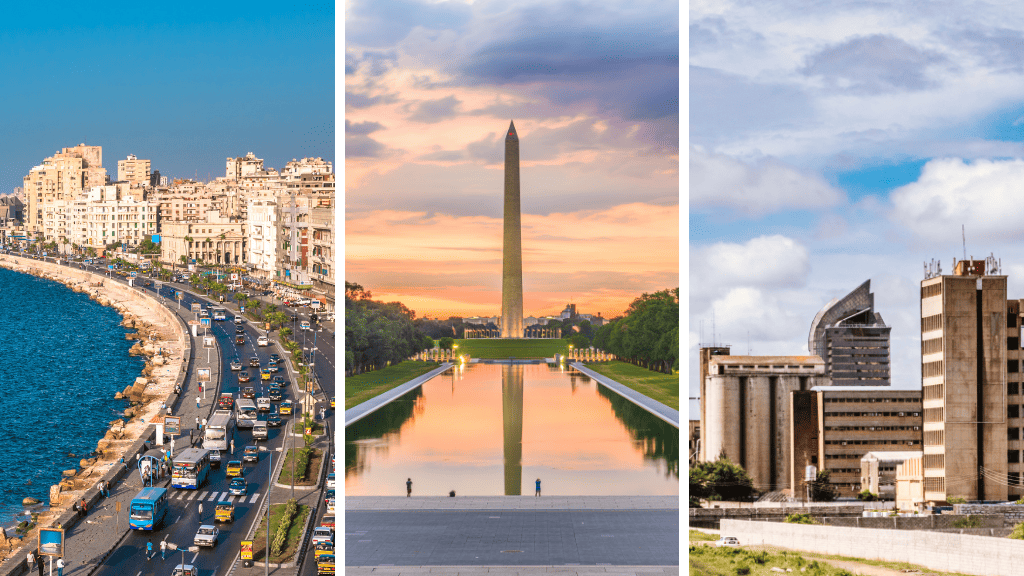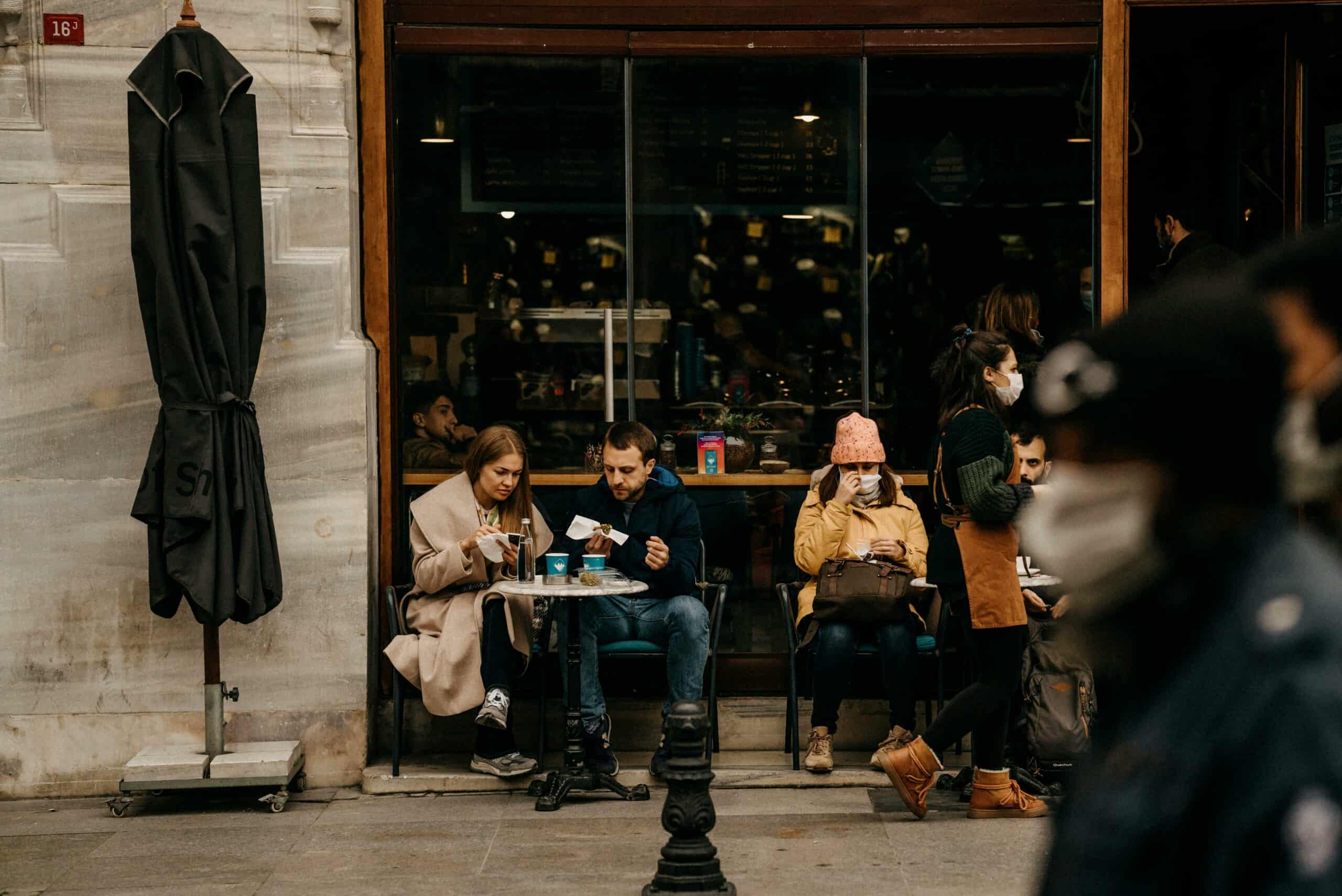
In June, at CCI’s book club, we chose to read Richard Florida’s The Rise of the Creative Class. I was thrilled; I only read this book once, many years before. I have lived, worked, and researched many more cities since then. I was wondering how and if I will read it differently.
Richard Florida is an urban theorist who focuses on socioeconomic issues. His book, The Rise of the Creative Class (2002) is his most well-known work. The book, which resonated very positively with urban scholars around the world, argues that this “creative class” fosters a more dynamic, open, and creative urban environment. Florida is a fellow city enthusiast; He believes in the power of cities. He believes that they can be both inspirational and productive. Much like CCI, Florida loves cities, good cities. In this blog post, I will examine Florida’s thesis in The Rise of the Creative Class against three cities I’ve lived in: Alexandria, Washington, DC, and Lusaka. Asking myself, do we really need the creative class to improve our cities?

Florida divides the creative class into two groups: the super-creative core and the creative professionals. The super creative core of people who are fully involved in the creative process and their working lives revolve around innovation; they include researchers, programmers, artists, and designers. The creative professionals are more traditional but draw on both “complex bodies of knowledge” and their creativity to do their jobs. They include healthcare professionals and finance bros. His book thesis examines the impact of this class on cities and on wider society. He claims that this class reshapes and defines workspace attitudes, coffee consumption, and, eventually, whole cities.
Lusaka, Where is Thy Creative Class?
First off: Collars.
A common joke in Lusaka on Fridays is about how good it feels to get out of formal clothing to something more casual. I heard this dad joke many times in various meetings with very different people. I am almost certain you can’t have an in-person meeting on Friday without starting with it. While I understand the need for certain jobs (like government and whatnot) to wear more formal clothing, I never really understood it for more creative sectors like architects, designers, or researchers. I stepped into many architecture firms, marketing firms, and government offices, and all seemed to be dressed in pretty much the same very formal manner. Except on Fridays, obviously.
Richard Florida associates a more laid-back, non-collar workspace with this rise in the creative class. The more you have creatives in the workspace, the more laid back the space is. The creative class also considers clothing as something very personal and shouldn’t be controlled by work. In DC, some of my CCI colleagues showed up to work in flip-flops (if they had no meetings that day). In Alexandria, designers and architects are often in cool jeans and creative shirts. I wonder what the response would be if they did so in Lusaka.

Second: work as leisure.
In his book, Florida mentions how Andy Warhol used to go to restaurants to get inspired by people and the surroundings. Andy Warhol’s life was his job. He walked the city, had a nice dinner, drank good coffee, and got inspired. In our work last year in Walking the Un-walkable, we found out that Lusaka elites don’t walk, don’t hangout in public spaces or gardens. Cavafy, a Greek poet, born in Alexandria, walked and wrote poetry about the city and his lover for most of his adult life. A stroll by the sea is still a corner stone to Alexandrian way of living, across the classes.

Third: Shaping the streets.
Florida started discussing how the creative sector really needs street life. He mentions how they need that cup of coffee before work for productivity and that glass of beer after work to wind down. Florida suggests that the creative class often stay single for longer periods, meaning more activities after work and on the weekend: gym, comedy clubs, cocktail bars, and pretentious slam poetry nights. This demand for cool places to hang out means demand for more mixed-use development; the bar after work and the gym before work is a core DC experience. They are the driving force behind lively, mixed-use neighborhoods. The impact of the creative class goes beyond just cool places to hang out. The creative class often calls for cycling lanes, sidewalk dining, public park preservations and services within walking or cycling distances. They will hold protests to keep their favorite coffee shop from closing down.

Can creative cities exist without the creative class?
The algorithm showed me a video of Taylor Swift talking about her struggles as a woman. I giggled as she explained how those are struggles faced by women all over America and the world. “America,” maybe I thought. Definitely not the world. Both North American urbanism and Taylor Swift are “unique” to North America. While we can draw lessons from it or enjoy a song every now and then, we should fully understand that sometimes/ most of the time it doesn’t apply to the rest of the world. Florida’s creative class thesis is based on his experience in North America and thus doesn’t apply to the global south.
In most of the global south, issues like mixed-use urbanism and sidewalk dining come not from a creative class but from working-class demands. Alexandria is one of the densest cities in Egypt. It is very mixed-use and has thriving street life all day long. It is a product of the working class, not a creative class. In North America, creative classes apply pressure to inject more street life in car-oriented US cities. Mediterranean cities offer thousands of years of vibrant street life dominated by the working classes even before the Industrial Revolution. Even in Lusaka, I can argue that the closest thing the city gets to shared streets, sidewalk dining experiences, and mixed-use development are townships. Meanwhile, people who work in more “creative” sectors go to work in button-up shirts and live in gated compounds.
If you asked the communities one the east side of the Anacostia River in DC if they would prefer to have a grocery store in walking distance of home, they’d almost certainly say yes. Everyone likes to be within walking distance of a store. American urbanism has made it so planners equipped with planning codes and building regulations are at the top of the urban hierarchy. Only communities that have enough affluence, like many in the creative class or those in the suburbs, can really influence the development of the city. Communities with very little power struggle to impact the development of their towns. In places like Lusaka and Alexandria, the streets are more shaped by people rather than by governments. Lusaka’s townships mostly operate outside the reach of the local government, and Alexandrians build no matter what or who.
Florida’s book is a fun, beautifully written, love letter to the power of cities built well and the communities that are shaping them. I definitely recommend reading it and reflecting on your own city. And most importantly, if you like density, mixed-use development, and history, I recommend visiting Alexandria. I promise its history is as interesting as its current urban development story. I am definitely not biased on this one.
Okay, coming to the last and most important question?
Did I include Taylor Swift’s name to attract the Swifties and to introduce them to the idea of charter cities?
Yes.
Do I believe the Swifties can build a charter city if they put their mind to it?
Yes.
Please join us and help us build cities.
PS: everything I know about Taylor Swift has been completely against my will








